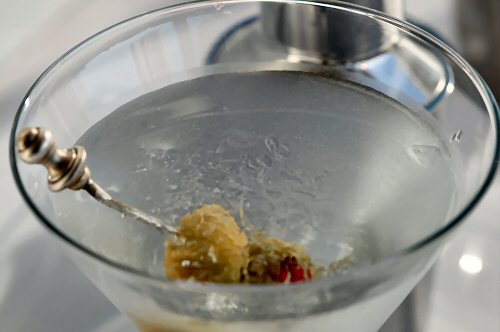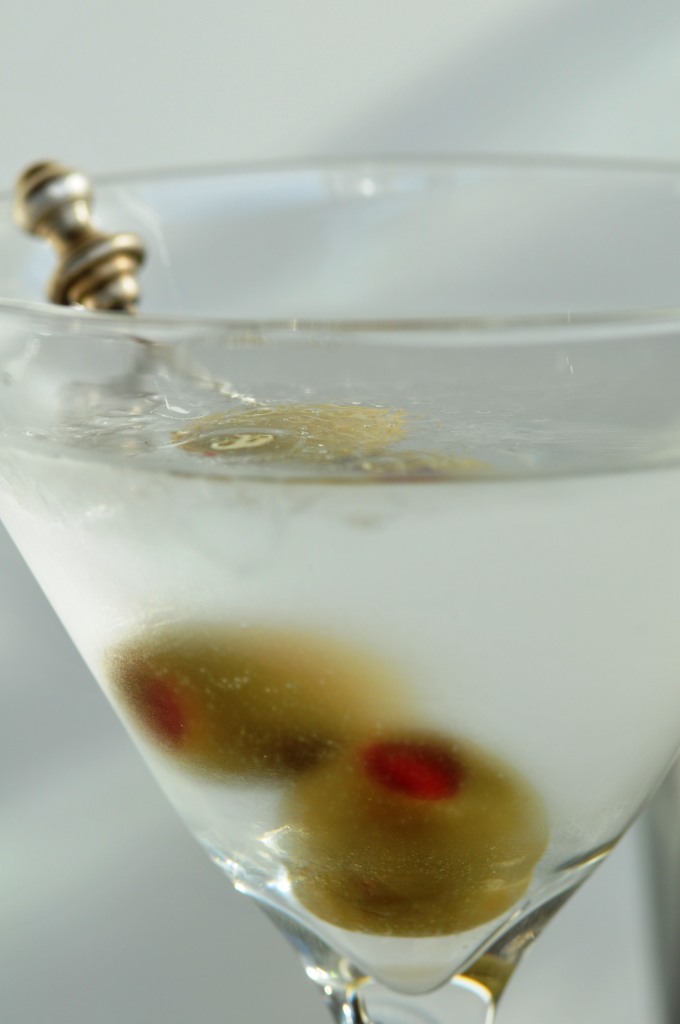Our take on a classic cocktail
Not everyone is a fan of the classic gin martini. It’s an acquired taste, and like caviar, or oysters, or even green olives, the gin martini is not for everyone. But for some of us, there are times when there is nothing better than the chill against your lips, the herbal bite on the sides of your tongue, and the wisp of piney essence rising through your sinuses that only a crisp, clear gin martini can provide.

You’d think that something as basic as a stiff pour of gin, a few drops of vermouth, and a couple green olives would be a ridiculously easy cocktail to make at home. But have you ever noticed how sometimes one martini tastes so much better than another, even when using the same brand of gin? I’m convinced it all comes down to the mixing process. It seems like every gin-lover has their own opinion on what works best. Some keep their gin in the freezer and pour it directly into a chilled glass that’s been coated with a swirl of vermouth. The “stirred vs. shaken” debate can be polarizing. As you might have guessed, I have my own opinion, and since you’ve read this far you may as well hear it:
1. I’m not afraid to taste a little vermouth in my martini. I think people take the concept of a “dry” martini too far. The original martini was 50% vermouth and, without some of this key ingredient, it’s not a martini in my book – it’s merely a glass of gin.
 2. Melted ice is not the enemy of a good cocktail. Shaking a drink with ice does indeed introduce some water, but in a stiff cocktail like a martini a little water goes a long way towards smoothing out the taste.
2. Melted ice is not the enemy of a good cocktail. Shaking a drink with ice does indeed introduce some water, but in a stiff cocktail like a martini a little water goes a long way towards smoothing out the taste.
3. Two olives, skewered, is the best garnish. One to eat early, to complement the flavor of the cocktail. And one to play with, to stir the bottom half of the drink in anticipation, to be savored with the last gulp. Some say that only an odd number of olives will do, but at my bar, one olive just isn’t enough, and three is gluttonous.
Of course, some people substitute vodka for gin. But really, why would you want to?








